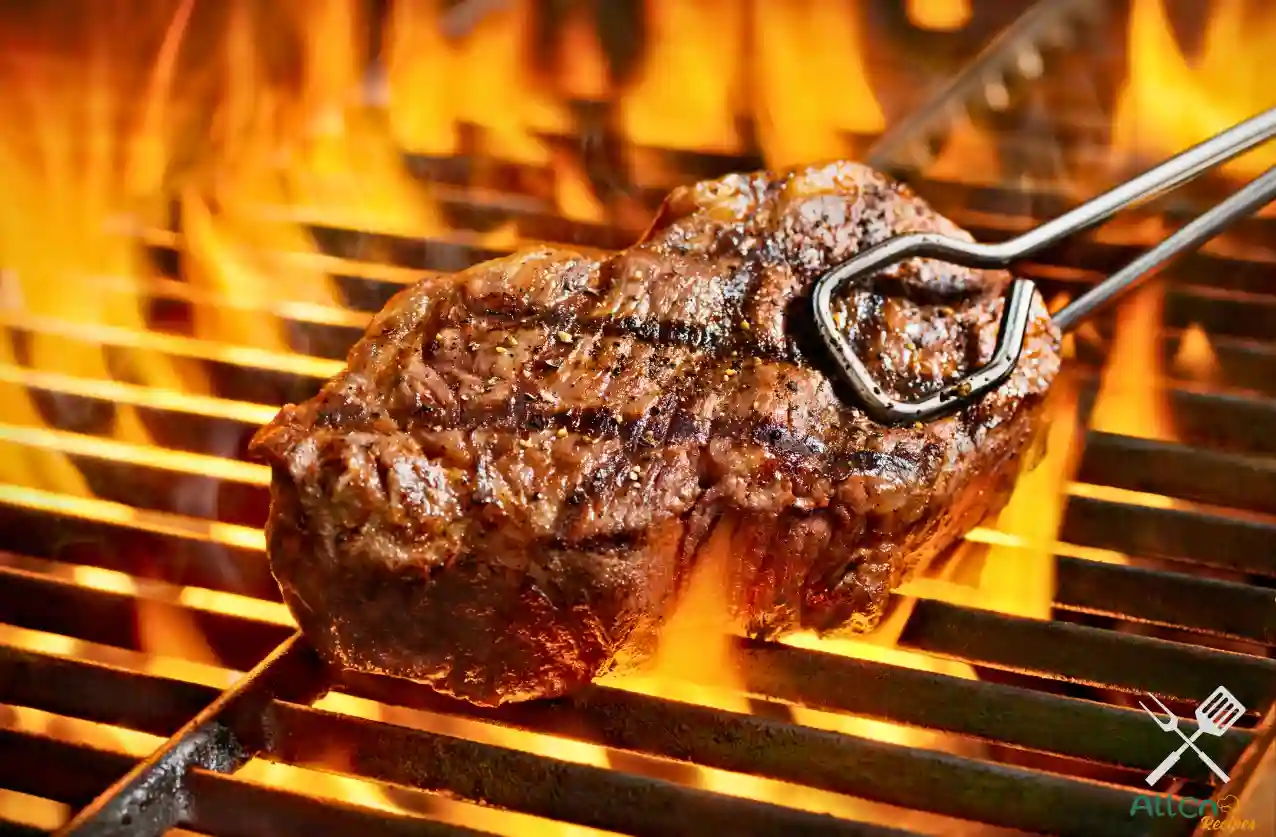If you’ve ever tried to make a steak with a wobbly nonstick pan and no idea what temperature the inside is, you already know: tools matter.
I used to think steak was all about “feel” and instinct. And sure, with enough practice, that helps. But let me save you a few bad dinners: a solid pan and a reliable thermometer make all the difference. You don’t need a kitchen full of gadgets. Just the right ones.
Here’s what I use when I want a steak to come out right.
1. Cast Iron: The MVP of the Kitchen
I avoided cast iron for years. Thought it was high maintenance. Thought I’d mess it up. Turns out, it’s easier than people say, and once it’s hot, nothing builds a crust like it.
You want heat? Cast iron holds it. You want that dark golden sear? Cast iron gives it to you. And if you treat it right, it lasts forever.
A few tips from experience:
- Get the pan hot before the steak goes in, let it heat up dry for 5–7 minutes.
- Don’t move the steak around. Let it sit, build its crust, then flip once.
- Wipe it out after use, rub it with a tiny bit of oil, and call it a day.
If you don’t own one yet, pick up a basic 10–12 inch Lodge skillet. It’s cheap. It works. And you’ll never go back.
2. Thermometers: Stop Guessing
I used to do the finger test. You know, press the steak, compare it to your palm, try to guess if it’s medium-rare. Let’s be honest: that only works sometimes.
A good thermometer takes out the guesswork. It tells you what’s going on inside the steak, not what it looks like on the outside. For thicker cuts, especially a big Delmonico, this matters.
Look for an instant-read digital model. Nothing fancy. Just fast and accurate.
Here’s a quick reference:
- Rare: 120–125°F
- Medium-rare: 125–130°F
- Medium: 135–140°F
- Medium-well: 145–150°F
Pull the steak a few degrees early. It keeps cooking while it rests.
3. Tongs > Forks
If you’re still poking your steak with a fork, stop. Every hole you make is a place for juice to escape. Tongs give you control without stabbing the meat.
Go for stainless steel with a good spring and some grip. The kind you’d grab hot corn or a chicken thigh with. Don’t overthink it.
4. A Decent Cutting Board
Not the plastic one that slides around. I mean something heavy. Wood is great. Big enough to let the steak rest, wide enough for slicing. Bonus points if it has a groove to catch the juices.
Rest the steak for 7–10 minutes on the board, then slice against the grain. Always.
That’s Really It
You don’t need a sous-vide machine. You don’t need steak weights or grill presses or infrared gadgets. You just need:
- Heat that holds (cast iron)
- A way to know what’s happening inside (thermometer)
- Tools that don’t wreck your crust (tongs)
- A place to rest and slice (board)
Invest once, and you’ll use them forever, not just for steak, but for chops, burgers, even pancakes (yes, cast iron is that versatile).
Final Note
The steak itself still does most of the work. But with the right tools, you get out of your own way, and start hitting that sweet spot where cooking feels less like guessing and more like knowing.
- Chuck Delmonico Steak: What It Is and Why Chefs Love It – September 13, 2025
- Reverse Sear Delmonico Steak: My Foolproof Method – August 25, 2025
- The Smart Shopper’s Guide to Buying a Delmonico Steak – August 16, 2025

Leave a Reply